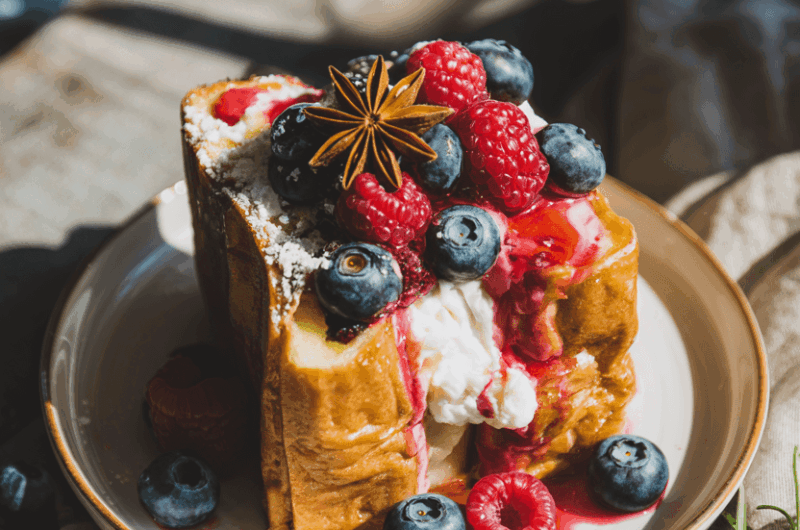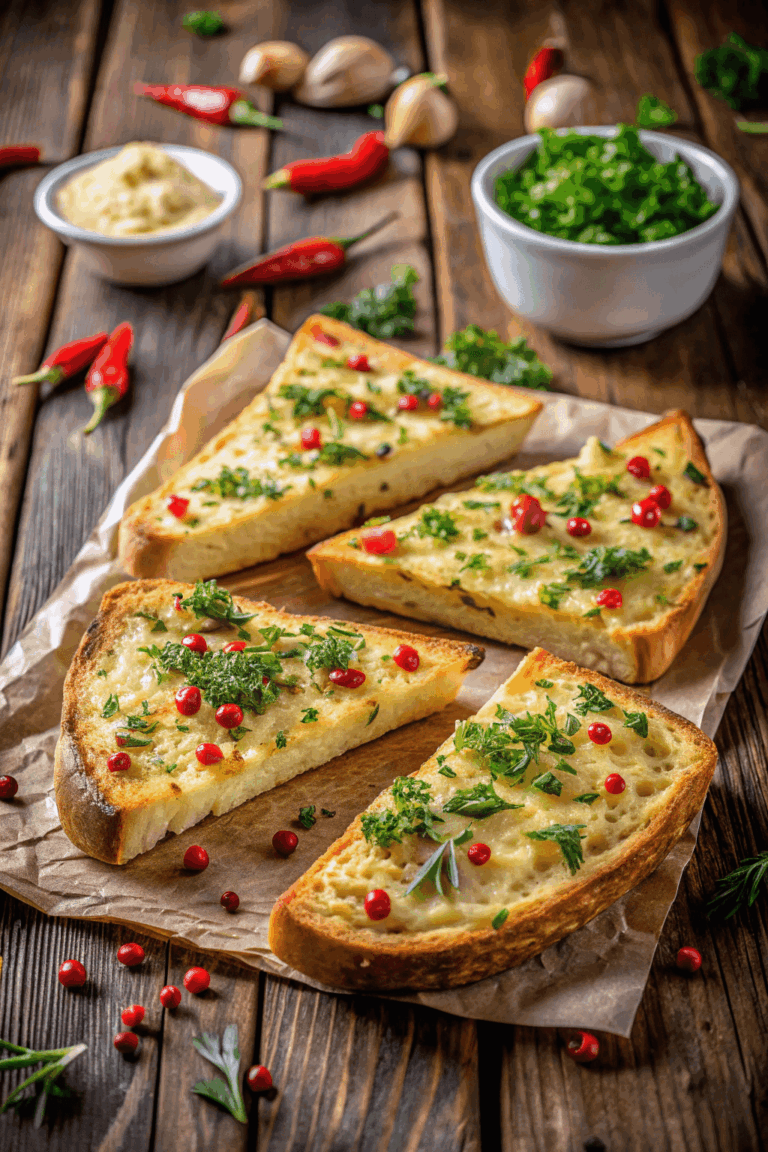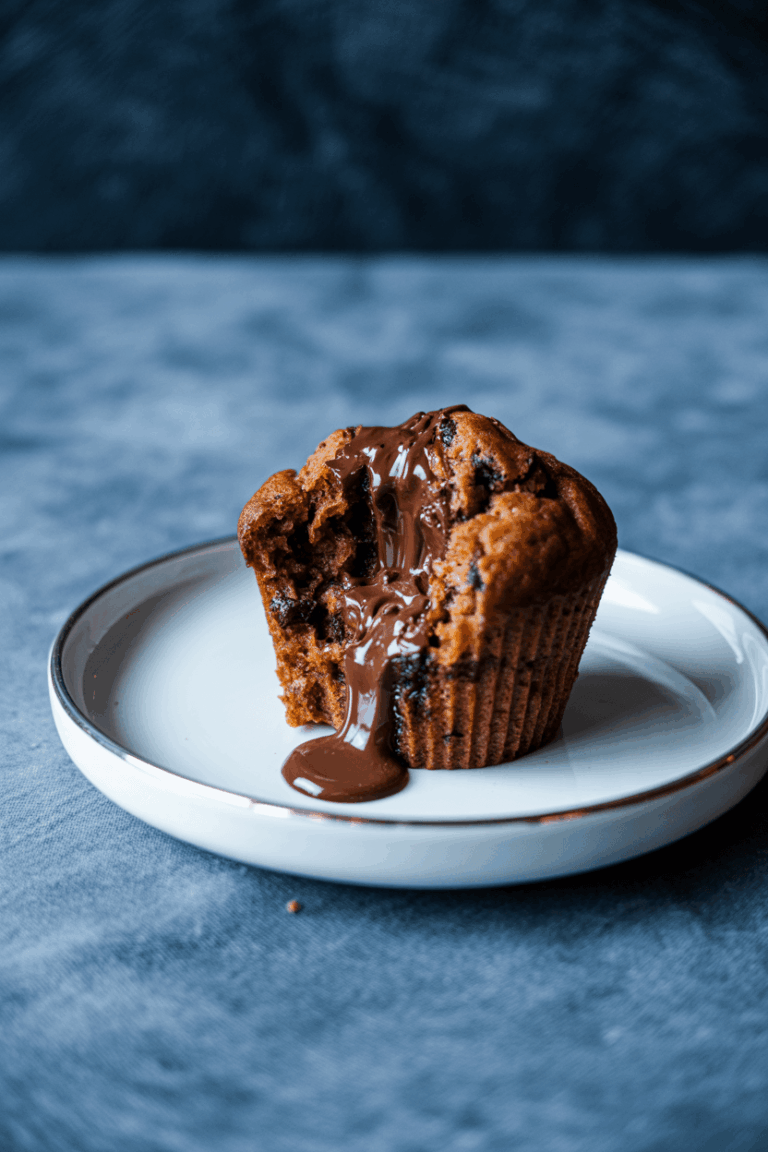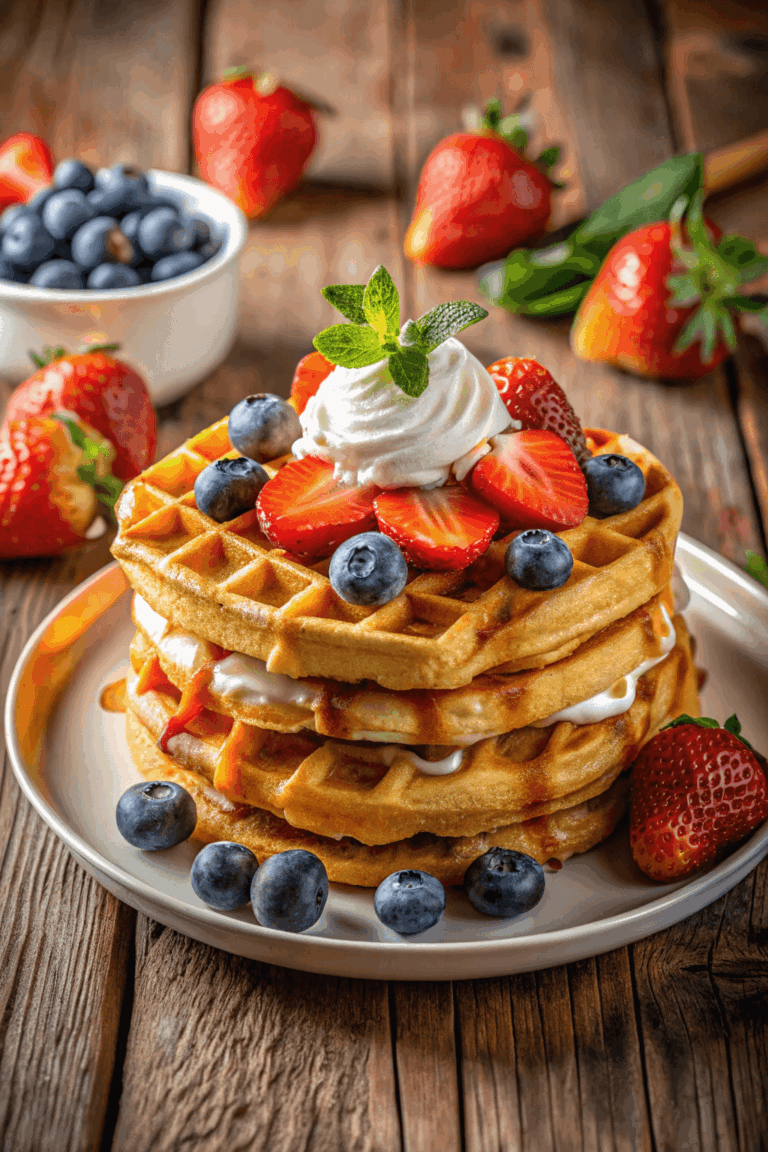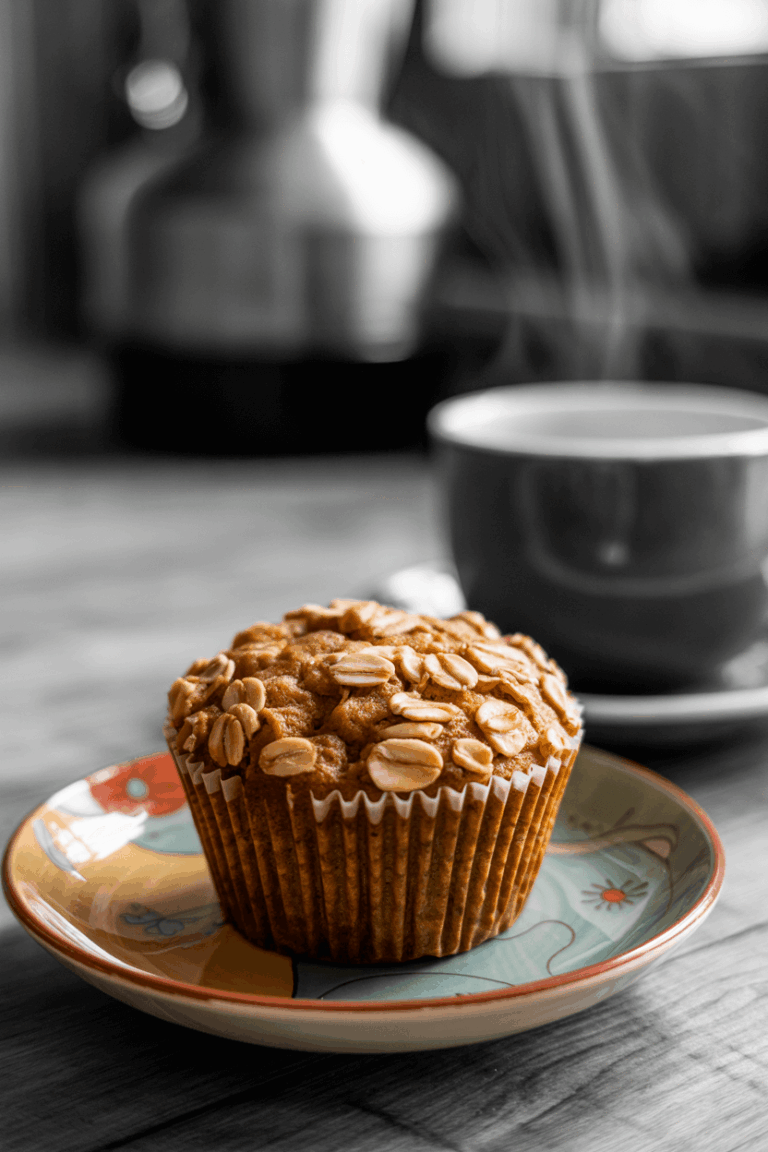The Best Fluffy Pancakes recipe you will fall in love with. Full of tips and tricks to help you make the best pancakes.
The Fluffiest French Toast I’ve Ever Made (And Yes, It’s Worth It)
There are mornings when I want eggs and toast. Then there are weekend mornings—the kind that demand a stack of something warm, cozy, and unapologetically indulgent.
That’s where French toast comes in. And not just any French toast. This one’s fluffy on the inside, golden on the outside, and smells like childhood happiness met a cinnamon candle.
If you’ve ever felt personally betrayed by soggy toast or eggy blandness, this recipe is your redemption arc. It’s got the secret ingredient that changes everything (spoiler: flour), and it works with the kind of bread that’s one step away from dessert. Let’s make the kind of breakfast that makes the neighbors jealous.
Recipe Snapshot
| Category | Details |
| Yield | 12 slices |
| Serving Size | 1 slice |
| Prep Time | 10 minutes |
| Cook Time | 20 minutes |
| Total Time | 30 minutes |
| Calories per Serving | 123* |
| Primary Cooking Method | Pan-frying |
| Occasion | Weekend brunch |
| Diet Type | Vegetarian |
*Calories are approximate and may vary depending on exact ingredients used.
French Toast
Course: BreakfastCuisine: FrenchDifficulty: Easy1
slice10
minutes20
minutes123
kcalWhat makes this French toast recipe the best? It’s got just the right amount of everything—sweetness, spice, and a magic trick from your baking aisle. That 1/4 cup of flour? Total game changer. It thickens the batter so it clings to the bread like a cozy sweater, turning your slices into crispy-on-the-outside, pillowy-on-the-inside brunch royalty.
Ingredients
- For the batter
1/4 cup all-purpose flour
1 cup whole milk (or half-and-half for extra richness)
3 large eggs
1 tablespoon white sugar
1 teaspoon vanilla extract
1/2 teaspoon ground cinnamon
1 pinch of salt
- For the bread
12 slices thick-sliced bread (brioche, challah, or day-old French bread work best)
- For cooking
Butter or oil for greasing the pan
- For serving
Maple syrup
Powdered sugar
Fresh berries (strawberries, blueberries, or banana slices)
Directions
- Prepare the Batter
Mix dry ingredients first Start by measuring 1/4 cup all-purpose flour into a large mixing bowl. This is your thickening powerhouse. Add in 1 tablespoon sugar, 1/2 teaspoon cinnamon, and a pinch of salt. Whisk them together until evenly combined. Doing this helps distribute the cinnamon and prevents it from floating like a dusty island on top.
Whisk in wet ingredients Gradually whisk in 1 cup of milk, making sure there are no clumps. Then crack in 3 large eggs, and continue whisking until the mixture is smooth and a little frothy. Add 1 teaspoon of vanilla extract and give it a final vigorous mix. - Preheat Your Cooking Surface
Place a non-stick skillet or griddle over medium heat. Add a small pat of butter or drizzle of oil to coat the surface lightly. You’re looking for that soft sizzle sound—not a roaring fry. If your butter starts to brown quickly, your pan is too hot.
Tip: Use a silicone brush to spread the butter evenly. No butter puddles allowed! - Soak the Bread Properly
Choose the right bread Go with thick slices of brioche, challah, or French bread. Slightly stale bread works best since it soaks without getting soggy.
Soak it just right Dip one slice at a time into the batter. Let it soak for 15–30 seconds per side, depending on how thick and stale the bread is. Flip gently to coat both sides. Let any excess batter drip off before transferring to the skillet.
Bread too fresh? Toast it lightly in a 350°F oven for 3 minutes on each side to dry it out just enough - Cook to Golden Perfection
Fry in batches Lay the soaked slices onto the hot skillet without overcrowding. Cook 2–3 minutes per side, flipping once, until both sides are golden brown with crispy edges. Adjust the heat as needed to prevent burning.
Refresh your skillet Before each new batch, add more butter or oil and give it a quick swipe with your brush.
Troubleshooting tip: If it’s browning too fast but still raw inside, lower the heat and cook a little longer. - Serve with Style
Dress it up Transfer the finished French toast slices to a plate. Top with a pat of butter, a heavy drizzle of maple syrup, and a sprinkle of powdered sugar. Pile on some fresh berries to brighten the plate.
Fancy touch: Macerate some strawberries with a tablespoon of sugar and let them sit for 20 minutes. Spoon them over the toast for a fruity upgrade.
Entertaining hack: Keep cooked slices warm in a 200°F oven while you finish the rest.
Extra Tips
- Use day-old bread: Slightly stale bread absorbs the batter better and helps prevent soggy slices.
- Drying out fresh bread: If you only have fresh bread, pop it in the oven at 350°F for a few minutes per side to dry it out without toasting it.
- Mix cinnamon with flour first: This keeps it from clumping when you whisk in the wet ingredients.
- Keep it warm: Store cooked slices in a warm oven (around 200°F) on a baking sheet until all batches are ready.
- Don’t rush the soak: Give each slice 15–30 seconds per side to really absorb the batter—rushing it can lead to dry centers.
- Add citrus zest: A little orange or lemon zest can brighten the flavor beautifully.
- Cook low and slow: If your slices are browning too quickly but still feel wet inside, lower the heat and cook them longer for even doneness.
Equipment List
- Mixing bowl
- Whisk
- Measuring cups and spoons
- Non-stick skillet or griddle
- Silicone or pastry brush
- Spatula
- Shallow dish or plate for dipping
- Baking sheet (if keeping toast warm in the oven)
Substitution Options
Dairy-Free? Use almond milk, oat milk, or coconut milk instead of whole milk. For cooking, swap butter with coconut oil or a plant-based spread.
No white sugar? Brown sugar adds a deeper flavor, and maple syrup can be used directly in the batter for a unique twist.
Gluten-Free? Use your favorite gluten-free bread—but go for a sturdier loaf, like gluten-free brioche or sandwich-style slices. Avoid ultra-soft varieties that fall apart when soaked.
No eggs? Try a vegan egg replacer (like flax eggs or JUST Egg) and mix with non-dairy milk. The flour still helps hold everything together.
Watching sugar intake? Skip the sugar in the batter and rely on the natural sweetness from fruit or a light drizzle of honey after cooking.
Out of vanilla? Almond extract or a dash of rum extract works wonders. Just use half the amount, as these can be strong.
Make-Ahead Tips
Planning ahead for a lazy Sunday or hosting brunch for a crowd? This French toast has your back. The batter can be made the night before—just whisk everything together and store it in an airtight container in the fridge. Give it a quick stir before using, as some separation may occur overnight.
You can also prep the bread. Lay your slices out on a wire rack and let them air-dry slightly the night before. This makes them even better at soaking up the batter without turning to mush.
And if you’re really thinking ahead, fully cook the French toast, let it cool, and then store it in a sealed container in the fridge for up to 3 days. To reheat, just pop the slices in the toaster or a 350°F oven for a few minutes. They’ll crisp up beautifully—maybe even better than fresh!
Storage Instructions
Allow any leftover French toast to cool completely at room temperature before storing. Once cooled, place the slices in an airtight container or sealable bag to maintain freshness.
They’ll keep in the refrigerator for up to 3 days. To reheat, simply pop them in a toaster or warm them in the microwave for a quick, cozy breakfast reboot.
Want to save them even longer? Freeze the slices! Stack them with parchment paper in between and store in a freezer-safe bag for up to 3 months. When you’re ready to eat, microwave for 30 seconds or warm them up in a toaster oven until heated through.
FAQ Section
How thick should the bread be?
Go for slices that are about 3/4 to 1 inch thick. Too thin, and they’ll turn soggy; too thick, and they won’t cook through properly.
How long should I soak the bread in the batter?
Anywhere between 15 to 30 seconds per side is perfect, depending on how dry or dense your bread is. It should feel soaked but not falling apart.
Can I make the batter the night before?
Absolutely. Just store it in an airtight container in the fridge and whisk it again before using. This makes mornings way less chaotic.
What’s the best way to reheat French toast?
The toaster or toaster oven is your best friend here—it crisps the edges right back up. Microwave works too, but you’ll lose a bit of crunch.
Can I skip the flour?
You can, but the toast won’t be as fluffy. Flour gives the batter more body, which helps create that irresistible crispy-soft texture.
Why is my French toast soggy?
Common causes include soaking too long, using fresh bread, or not cooking long enough on low-medium heat. Dry, sturdy bread and a good pan-to-toast ratio are key.
Serving Suggestions
French toast is already a breakfast hero, but the right toppings and pairings can turn it into a full-blown event. Classic maple syrup is non-negotiable, but you can take it up a notch with a sprinkle of powdered sugar, a handful of fresh berries, or a dollop of whipped cream.
For something heartier, pair it with crispy bacon, sausage links, or a fried egg on the side. Want to lean sweet? Add caramelized bananas, a spoonful of berry compote, or a scoop of vanilla Greek yogurt. Feeling festive? A dusting of cinnamon sugar or a splash of orange zest over the top works wonders.
Hosting brunch? Serve your French toast with coffee, mimosas, or a fruit salad for a well-rounded morning spread.
Nutritional Information
| Nutrient | Per Slice |
| Calories | 123 kcal |
| Fat | 3g |
| Carbs | 19g |
| Protein | 5g |
Keep in mind these values are estimates. Your final numbers may vary depending on the type of bread and toppings you choose. Brioche or challah will bring more richness, while almond milk and thinner slices offer a lighter alternative.

Final Thoughts
So there you have it—your ultimate, no-fuss, weekend-worthy French toast. Whether you’re rolling out of bed in your pajamas or hosting a brunch that needs to impress, this recipe has your back.
It’s simple, customizable, and turns basic ingredients into a breakfast masterpiece. Once you try this version—with that sneaky little addition of flour—you’ll never go back to the soggy, bland stuff again.
Make it your own. Get wild with toppings. Stack it sky-high. Just promise me one thing: you’ll eat it warm, with sticky fingers and a happy heart. That’s what breakfast dreams are made of.

